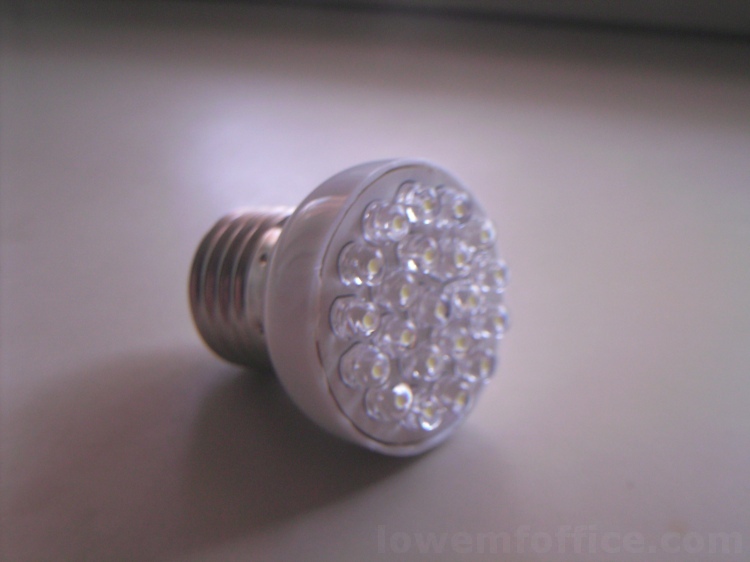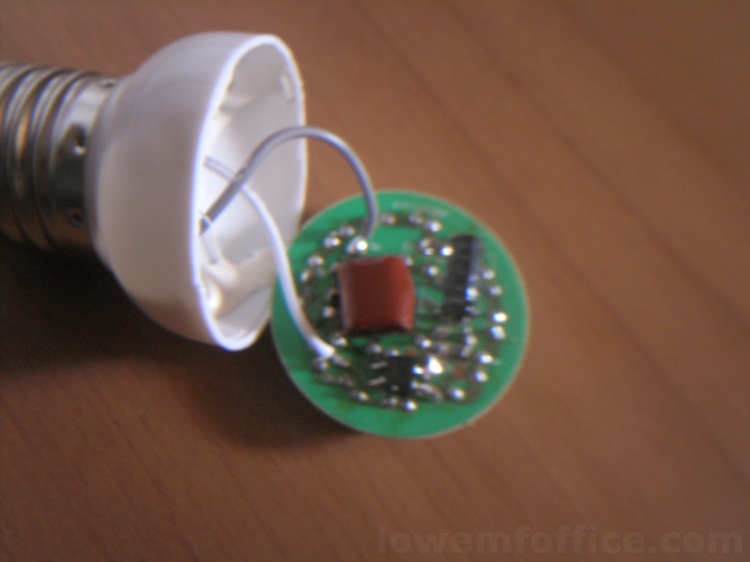Electromagnetic emissions of LED light bulbs
LED lights are a promising technology for having low electromagnetic emissions but today's LED lights are still not enough safe in terms of EMF.
 |
 |
An LED emits light only when the voltage applied to it is directed in one particular way, so the LED lamps could be powered with very smooth DC voltage which wouldn't create any electromagnetic effect.
Instead electric networks carry AC voltage and LED lamps contain just some simple rectifier to prevent the inverse voltage on the LEDs, and this is disastrous in terms of EM waves created.
The rectifier breaks the AC input wave and creates a lot of AC waves with frequencies that are multiple of the input frequency. For example if the AC input is 50 Hz the LED lamp will be crossed by EM waves with frequency 100, 150, 200, 250,.....Hz. (If the AC input is 60 Hz the waves will be at 120, 180, 240, 300, 360,....Hz). The higher the frequency of these waves the lower their amplitude, but the decrease of the amplitude from a frequency to the next is not very big so there are waves with noticeable amplitude even at the twenti-eth multiple of the base frequency, ie. 1000 Hz (1200 Hz for AC 60 Hz input), and beyond.
Compared to an incandescent lamp, which does not generate additional EM waves on its own but creates an alternate electromagnetic field with the same frequency of the AC voltage, an LED lamp has much more EM noise because of the frequency omponents introduced by the rectifier.
The effect of an LED lamp with a simple rectifying circuit is noticeable, the EMF is still of low frequency but can reach several hundreds Hz or even few kHz.
Other problems of LED lights
In addition to the base wave of 50 or 60 Hz, the AC voltage of the electric network carries a variable amount of waves of different frequency bands, that are different from place to place, and are caused by the devices connected to the network, this is the so called "dirty electricity".
An LED lamp connected to the electric network will get these noise from the network and partially radiate it, and since the current in the lamp is quite high the noise will be radiated more than in other lamps.
The presence of the rectifier causes AC noise into the wires that bring AC voltage to the LED lamp. This noise travels along the electric network and reaches other devices connected to it, like computer monitors.
With a smooth DC voltage source a LED lamp could generate light without accompanying electromagnetic waves of low frequency, but the DC current intensity that flows in the wires of the LED lamp is quite high, it can easily be of several Ampere, which means that the magnetic field around these wires is quite intense. If the current is really constant, like that from a battery for example, this magnetic field will be really static, with no vibrations, like that of a permanent magnet. This kind of magnetic field is still dangerous for the human body but it decreases very much with the distance from the source, so it is not a problem when the lamp is on the ceiling. Instead, when the LED lamp is on a desktop or near your bed it can be a problem. Anyway, a small LED lamp powered with very smooth DC current creates a small static magnetic field which is not dangerous at 20-30 cm (1 ft).
Partial solution for the LED lamps
We have found that the EM emissions of a LED lamp which has a simple rectifier can be reduced noticeably by covering the lamp's base with several layers of aluminum foil.
Since the base of the lamp is closed on the back by the metal connector and is partially closed on the front by the LEDs and their printed circuit board, the metal foil around the base forms an almost closed case around the circuits.
The shielding effect is partially of magnetic type, and partially of electric type.
The best use of LED lights is that with a good source of DC voltage, which can be a linear power supply with enough DC filters.
Some LED lamps are actually powered with a low voltage power supply which also regulates the intensity of current, but such power supplies are all made with the switching technology and so introduce a lot of electromagnetic noise into the lamp.
The Pulse Width Modulation
To trim the brightness of the LEDs, most commercial products use a pulsed current with a base frequency of 10-60 kHz. The pulsed voltage/current of course is a wave that goes into the lamp, and along the wires, and because of its shape it contains also many other components of higher frequency.
This problem wouldn't exist if the LEDs were powered with smooth DC voltage/current and the brightness was changed by simply changing the intensity of current.